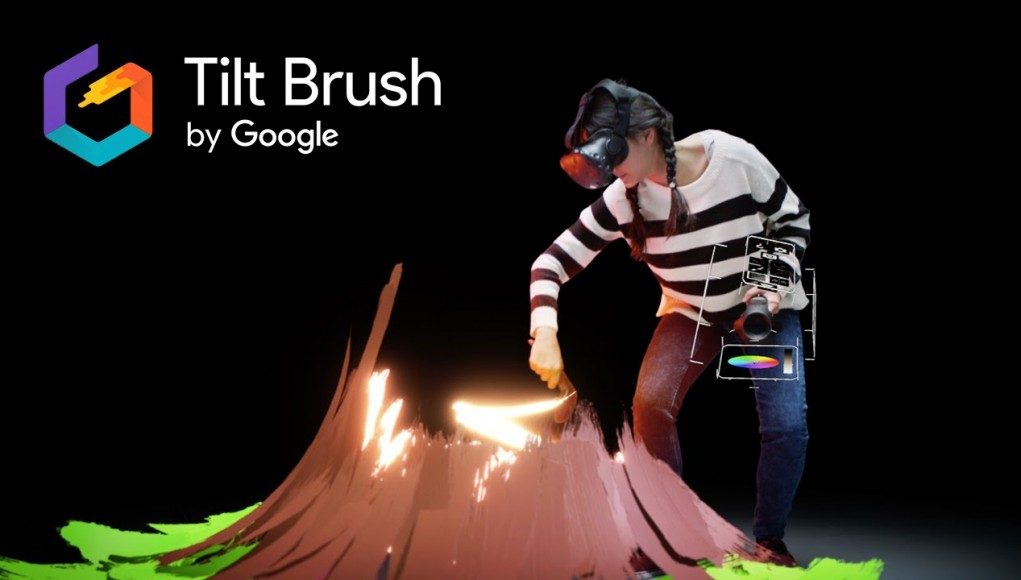After a long and somewhat awkward period of Google keeping all of their VR apps from Facebook’s VR platforms on desktop (with Rift) and mobile (with Gear VR), Tilt Brush is the first VR olive branch extended across the platform gap between these two major tech competitors.
When the acclaimed Tilt Brush ‘VR paint’ app launched alongside the HTC Vive in early 2016, it made sense for the program not to support the Oculus Rift as only the Vive at that time had motion-tracked VR controllers.

Once Oculus got their Touch VR controllers out the door later in the year however, it seemed odd for the game—which seemed in every other way perfectly capable of running on the Rift—to not have official support for Facebook’s VR headset. Once the impressive Google Earth VR launched yet later in the year, also lacking Rift support, a pattern began to emerge; that was only codified by the fact that the company’s YouTube VR app launched (and remains) exclusive to Google’s Android Daydream platform on mobile.
Even at the largest scales—and where there’s a tangible impact on the company’s bottom line—Google’s most important apps (like Gmail, Drive, Chrome, and Photos) can be found on Apple’s iOS, the leading competitor of Google’s Android mobile operating system. For a company that makes money by getting as many people to use their software products as possible, the VR situation between Google and Facebook has been… awkward.
But, a new glimmer of hope has emerged. Today Google is announcing that the company’s first desktop VR app, Tilt Brush is not just getting Rift support through SteamVR, it’s actually launching on Oculus’ own ‘Home’ platform on desktop, with unique support for the headset and its controllers:
• In order to make it easier to paint using Rift while seated and facing forward, we recently added features that let you rotate and resize your work.
• We redesigned interactions to take advantage of the Oculus Touch controllers. For example, you can easily highlight which button you’re touching on the controller and get an indication of what it does just by resting your finger on it. This makes it easy to see exactly what button you’re about to press while using Tilt Brush.
• Painting isn’t just visual. Thanks to the Rift’s built in headphones, you’ll be fully immersed from the moment you enter Tilt Brush’s virtual canvas. Different brushes create different sound effects, and they become a vivid part of the experience through your headphones. We love using audio reactive mode with Rift headphones and seeing strokes come to life with light and sound.
The launch of Tilt Brush on the Oculus Rift (priced at $30) puts Google and Oculus’ parent company, Facebook, now in friendly(ish) VR territory; that’s a big deal for the two companies that are otherwise competitors on multiple major lines of business, like advertising and video streaming. Of course, the timing is rather convenient given that Oculus has now launched its own Tilt Brush-like app, Quill, which means Google no longer has much to gain by keeping the app on one platform.
As users of VR, we can only hope this launch signifies a forthcoming trend of Google’s VR apps functioning more like their mobile apps, by supporting VR hardware as widely as possible, rather than being used in an effort to drive platform adoption. While this is a good step in the right direction for users, Tilt Brush is a niche project compared to Google’s other initiatives. Perhaps the most important future barometer of Google’s VR platform politicking is YouTube VR, which on mobile remains exclusive to Google’s Daydream VR, and only recently made its way to Sony’s PlayStation VR headset, while remaining MIA on Vive or Rift, both of which launched long before PSVR.







